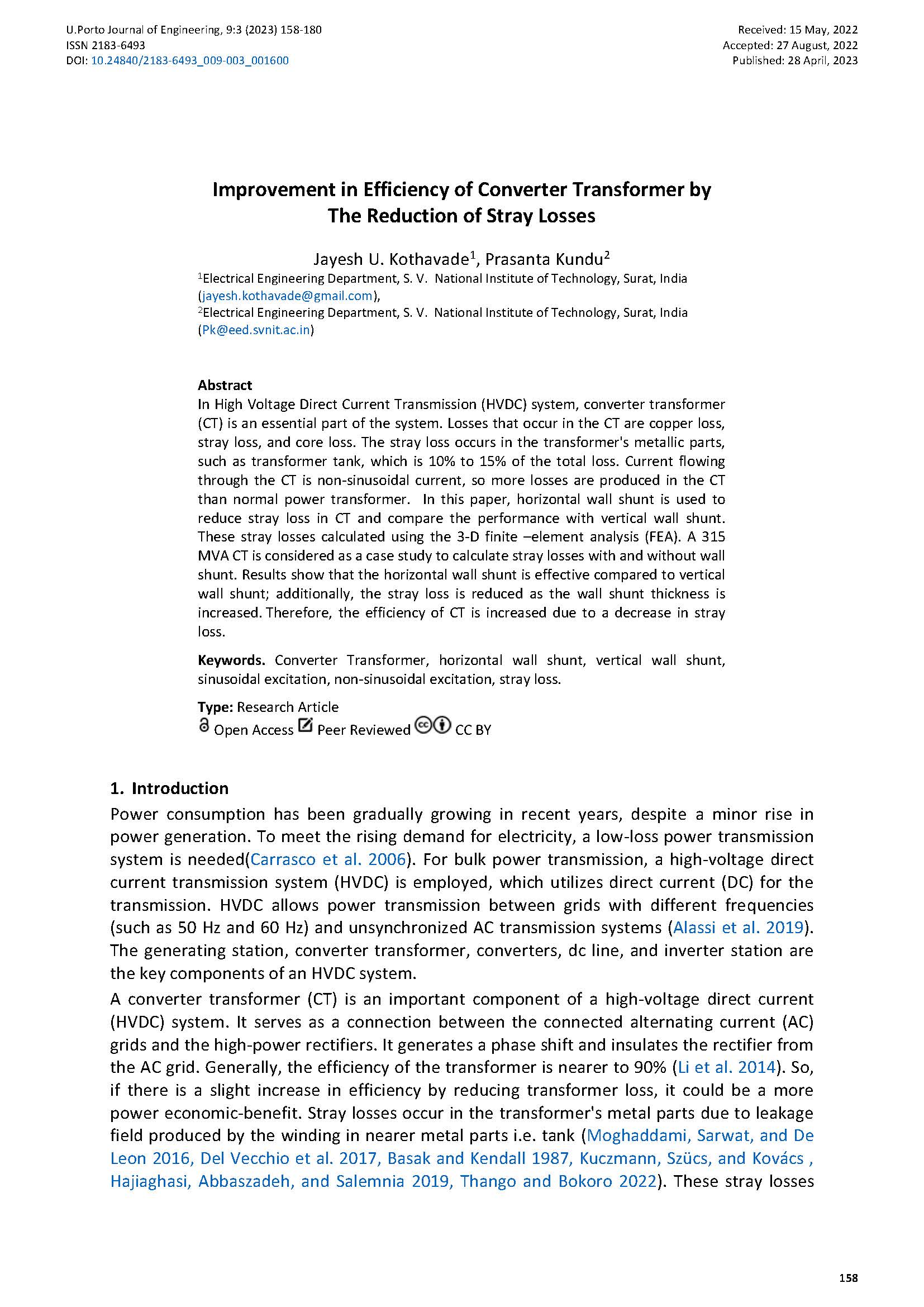Improvement in Efficiency of Converter Transformer by The Reduction of Stray Losses
Main Article Content
Abstract
In High Voltage Direct Current Transmission (HVDC) system, converter transformer (CT) is an essential part of the system. Losses that occur in the CT are copper loss, stray loss, and core loss. The stray loss occurs in the transformer's metallic parts, such as transformer tank, which is 10% to 15% of the total loss. Current flowing through the CT is non-sinusoidal current, so more losses are produced in the CT than normal power transformer. In this paper, horizontal wall shunt is used to reduce stray loss in CT and compare the performance with vertical wall shunt. These stray losses calculated using the 3-D finite –element analysis (FEA). A 315 MVA CT is considered as a case study to calculate stray losses with and without wall shunt. Results show that the horizontal wall shunt is effective compared to vertical wall shunt; additionally, the stray loss is reduced as the wall shunt thickness is increased. Therefore, the efficiency of CT is increased due to a decrease in stray loss.
Downloads
Article Details

This work is licensed under a Creative Commons Attribution 4.0 International License.
Authors who publish with this journal agree to the following terms:
- Authors retain copyright and grant the journal right of first publication with the work simultaneously licensed under a Creative Commons Attribution License that allows others to share the work with an acknowledgement of the work's authorship and initial publication in this journal.
- Authors grant the journal the rights to provide the article in all forms and media so the article can be used on the latest technology even after publication and ensure its long-term preservation.
- Authors are able to enter into separate, additional contractual arrangements for the non-exclusive distribution of the journal's published version of the work (e.g., post it to an institutional repository or publish it in a book), with an acknowledgement of its initial publication in this journal.
- Authors are permitted and encouraged to post their work online (e.g., in institutional repositories or on their website) prior to and during the submission process, as it can lead to productive exchanges, as well as earlier and greater citation of published work (See The Effect of Open Access).

